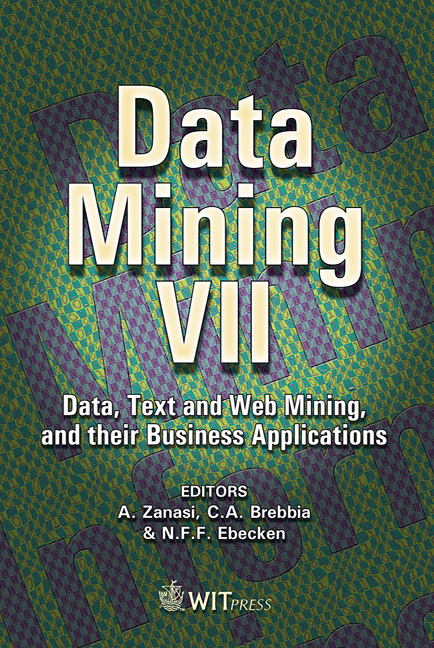SEQUEST: Mining Frequent Subsequences Using DMA-Strips
Price
Free (open access)
Volume
37
Pages
12
Published
2006
Size
452 kb
Paper DOI
10.2495/DATA060321
Copyright
WIT Press
Author(s)
H. Tan, T. S. Dillon, F. Hadzic & E. Chang
Abstract
Sequential patterns exist in data such as DNA string databases, occurrences of recurrent illness, etc. In this study, we present an algorithm, SEQUEST, to mine frequent subsequences from sequential patterns. The challenges of mining a very large database of sequences is computationally expensive and require large memory space. SEQUEST uses a Direct Memory Access Strips (DMA-Strips) structure to efficiently generate candidate subsequences. DMA-Strips structure provides direct access to each item to be manipulated and thus is optimized for speed and space performance. In addition, the proposed technique uses a hybrid principle of frequency counting by the vertical join approach and candidate generation by structure guided method. The structure guided method is adapted from the TMG approach used for enumerating subtrees in our previous work [8]. Experiments utilizing very large databases of sequences which compare our technique with the existing technique, PLWAP [4], demonstrate the effectiveness of our proposed technique. Keywords: mining frequent subsequences, sequence, phylogenic tree, sequential strips. 1 Introduction Data mining strives to find frequent patterns in data [1–4, 12]. A task in data mining is characterized by the type of data, structures and patterns to be found [8, 9]. Advancements in data collection technologies have contributed to the high volumes of sales data. Sales data typically consists of a transaction timestamp and the list of items bought by customers. If one is interested in inter-transactional patterns, sales data is a good example of a sequential pattern. Other
Keywords
mining frequent subsequences, sequence, phylogenic tree, sequential strips.





